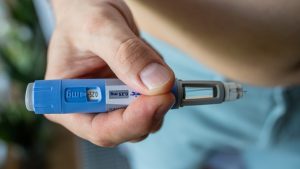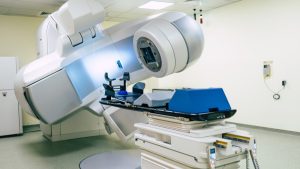Articles / ‘Egg timer’ tests can’t reliably predict chance of conceiving or menopause timing


writer
Clinical Professorial Research Fellow, The University of Queensland

writer
Senior Research Fellow, Global and Women’s Health, School of Public Health & Preventive Medicine, Monash University
0 hours
These are activities that expand general practice knowledge, skills and attitudes, related to your scope of practice.
0 hours
These are activities that require reflection on feedback about your work.
0 hours
These are activities that use your work data to ensure quality results.
These are activities that expand general practice knowledge, skills and attitudes, related to your scope of practice.
These are activities that require reflection on feedback about your work.
These are activities that use your work data to ensure quality results.
Many women who want to have children and are getting older worry about their fertility. The “egg timer” blood test is marketed as an empowering way to give women insights to help them plan when to have children.
Online companies are now also selling the test directly to consumers to do at home, promoting the test as a way for women to decide when to have a baby, even if they aren’t thinking of having one any time soon.
But it can’t reliably predict the likelihood of pregnancy or how long it would take to get pregnant.
Despite this, egg timer testing is promoted to women not undergoing IVF as a way to assess their current and future fertility.
Our analysis of Australian and New Zealand fertility clinic websites found some claimed the test could predict a woman’s chance of conceiving or identify women at risk of early menopause.
The test measures the level of anti-Mullerian hormone (AMH) in the blood and is known clinically as an AMH test.
AMH is produced by follicles in the ovaries (little fluid-filled sacs that contain immature eggs) and helps follicles and eggs grow during the menstrual cycle. Because the number of follicles in the ovaries drops with increasing age, the level of AMH also falls.
The AMH level indicates the number of eggs in the ovaries, or ovarian reserve.
It is often used in IVF treatment, as it can suggest how many eggs a woman may get when her ovaries are stimulated with fertility drugs.
But it can’t tell you anything about egg quality. Women with low AMH levels have the same chance of conceiving as women with normal AMH levels.
It also can’t reliably predict menopause timing for individual women.
Because of this, the American College of Obstetricians and Gynaecologists strongly discourages AMH testing in women who are not seeking fertility treatment. It states the test:
should not be ordered or used to counsel women who are not infertile about their reproductive status and future fertility potential.
No similar guidance has been published by the relevant colleges in Australia.
The test isn’t Medicare-subsidised. Most AMH tests are paid for privately by consumers, costing around A$80-$120. Because of this, data on current test usage is not publicly available.
To find out how many women in Australia are accessing AMH testing and why, we conducted the first investigation into its use in Australia.
We surveyed a representative sample of 1,773 women aged 18 to 55, recruited through the Life in Australia national study.
We asked them if and how they had heard about AMH testing, whether they had ever had an AMH test, their main reason for testing and how they accessed the test.

Our results, published today, show 13% of the women had heard about AMH testing and 7% had had an AMH test.
The majority had the test for medically indicated reasons, such as during infertility investigations (51%), or to find out if a medical condition had affected their fertility (11%). This included having had chemotherapy or radiotherapy, endometriosis, thyroid issues, and others.
Concerningly, one-third reported having had the test for other reasons. This included gaining insights into their fertility or inform their reproductive life planning (30%).
Most women who had an AMH test first heard about it from their GP or fertility specialist, suggesting doctors are currently the main drivers of test uptake.
However this may change with the recent emergence of direct-to-consumer AMH testing in Australia, as online companies increase their marketing.
Getting the test to inform you about your fertility may lead you to make choices based on a false premise.
If you get a normal or high AMH result, it may give a false sense of security about delaying pregnancy, when age is the most important factor of female fertility.
If you receive a low result, it may cause unwarranted anxiety about not being able to conceive. This may cause pressure to conceive earlier than desired, or create a sense of urgency and haste towards fertility treatment, such as egg freezing.

To make informed decisions about AMH testing, women need clear, evidence-based information. We have developed and are currently testing an evidence-based information guide to assist with this.
Unfortunately, there is no reliable test of a woman’s fertility.
But it’s important to know a woman’s age is the greatest predictor of her chance of pregnancy. The only real way to know your fertility is by trying to get pregnant when you are ready.![]()
Tessa Copp, NHMRC Emerging Leader Research Fellow, University of Sydney; Jenny Doust, Clinical Professorial Research Fellow, The University of Queensland, and Karin Hammarberg, Senior Research Fellow, Global and Women’s Health, School of Public Health & Preventive Medicine, Monash University
This article is republished from The Conversation under a Creative Commons license. Read the original article.
![]()

Menopausal Hormone Therapy - What Dose of Estrogen is Best?

Cardiovascular Benefits of GLP1s – New Evidence

Oral Contraceptive Pill in Teens

RSV and the Heart

writer
Clinical Professorial Research Fellow, The University of Queensland

writer
Senior Research Fellow, Global and Women’s Health, School of Public Health & Preventive Medicine, Monash University



Modified but kept in place
Eliminated entirely without replacement
Maintained as is
Completely replaced with an alternative system
Listen to expert interviews.
Click to open in a new tab
Browse the latest articles from Healthed.
Once you confirm you’ve read this article you can complete a Patient Case Review to earn 0.5 hours CPD in the Reviewing Performance (RP) category.
Select ‘Confirm & learn‘ when you have read this article in its entirety and you will be taken to begin your Patient Case Review.
Menopause and MHT
Multiple sclerosis vs antibody disease
Using SGLT2 to reduce cardiovascular death in T2D
Peripheral arterial disease
